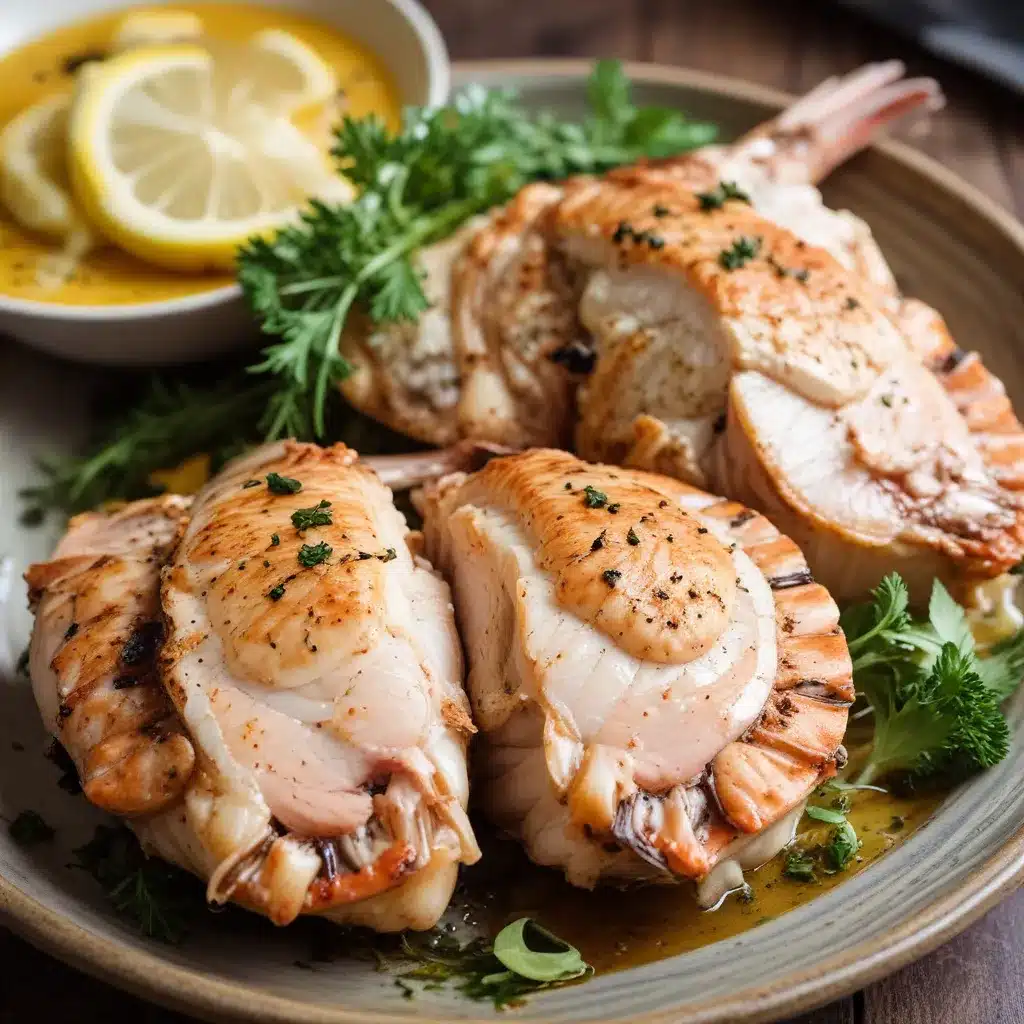
Monkfish, with its sweet, meaty flesh reminiscent of lobster, has earned the affectionate moniker “poor man’s lobster” among seafood enthusiasts. This deep-sea dweller, also known as the “stargazer” in Australia, is a highly prized delicacy that deserves a spot in the culinary spotlight.
Monkfish Characteristics
Monkfish, scientifically classified as Lophius piscatorius, is a bottom-dwelling fish found in the Atlantic and Mediterranean waters. Its distinctive appearance, with a large, gaping mouth and fins that resemble wings, has earned it some unflattering nicknames. However, what it lacks in looks, it more than makes up for in the quality of its flesh.
The fillets of monkfish are thick, dense, and remarkably similar to the succulent meat of lobster tails. The texture is firm yet tender, and the flavor is sweet, clean, and remarkably non-fishy. This makes monkfish an excellent choice for those who may be wary of strong seafood tastes.
Culinary Applications of Monkfish
Monkfish’s versatility in the kitchen is one of its greatest assets. Its meaty texture allows it to be prepared in a variety of ways, from pan-searing and roasting to poaching and grilling. The firm flesh also holds up well to bolder flavors, making it a suitable partner for bold sauces, spices, and marinades.
In addition to its lobster-like qualities, monkfish is also prized for its sustainability. As a species, monkfish is not overfished, and its populations are generally considered healthy. This makes it an environmentally conscious choice for the eco-minded seafood lover.
Nutritional Profile of Monkfish
Monkfish is not only delicious but also nutritious. It is an excellent source of protein, with a 3-ounce serving providing around 20 grams. It is also low in calories and fat, making it a heart-healthy option. Monkfish is a good source of various vitamins and minerals, including vitamin B12, niacin, and selenium, which all play important roles in maintaining overall health.
Cooking with Monkfish
Preparation Techniques
When working with monkfish, it’s important to note that the skin and dark membrane should be removed, as they can impart a bitter flavor. The thick, cylindrical fillets can be cut into steaks or chunks, depending on the desired presentation and cooking method.
Flavor Pairings
Monkfish’s mild, sweet flavor pairs beautifully with a wide range of seasonings and accompaniments. Classic herb combinations like garlic, thyme, and parsley complement the fish’s natural taste, while bolder flavors like lemon, capers, and white wine can also bring out its nuances.
Cooking Methods
Monkfish is well-suited to various cooking techniques. Pan-searing and roasting are popular methods that highlight the fish’s firm texture and allow for a nice sear or caramelization on the surface. Poaching and en papillote (in parchment paper) are gentler cooking methods that preserve the fish’s delicate flavor and juicy texture.
Transforming Monkfish
Monkfish as a Substitute for Lobster
The similarities between monkfish and lobster go beyond just the flavor and texture. Monkfish fillets can often be substituted for lobster tails in recipes, providing a more budget-friendly option that still delivers a luxurious dining experience.
Recipes Featuring Monkfish
Monkfish shines in a variety of culinary applications, from classic seafood dishes to more inventive preparations. Monkfish Piccata, with its lemon-caper sauce, is a wonderful example of how the fish’s mild flavor allows it to take center stage. Monkfish Bouillabaisse, a French seafood stew, showcases monkfish’s ability to hold its own alongside other marine delicacies.
Sustainability Considerations
While monkfish is not considered endangered, it’s important to be mindful of sourcing and sustainability when purchasing this fish. Look for monkfish that is Wild Caught or certified by organizations like the Marine Stewardship Council (MSC) to ensure you’re making an environmentally responsible choice.
Monkfish in Culinary History
Origins of the “Poor Man’s Lobster” Nickname
The moniker “poor man’s lobster” is thought to have originated due to monkfish’s relatively low cost compared to its luxurious counterpart. In the past, monkfish was often considered a “trash fish” or overlooked by diners, making it a more accessible option for those on a budget.
Cultural Influences on Monkfish Cuisine
Monkfish has a strong presence in various culinary traditions around the world. In Mediterranean cuisines, it is often featured in bouillabaisse and brodetto, hearty seafood stews. In Japan, monkfish liver (known as ankimo) is prized as a delicacy, while in Korea, the fish is used in maeuntang, a spicy monkfish stew.
Monkfish’s Evolution in Fine Dining
Once relegated to the realm of the “poor man’s lobster,” monkfish has undergone a transformation in the culinary world. Its versatility and unique flavor profile have made it a sought-after ingredient in fine dining establishments, where chefs showcase its potential through creative preparations and elegant plating.
Monkfish Versatility
Monkfish in International Cuisines
Monkfish’s adaptability extends beyond Western culinary traditions. In Asian cuisines, it is often used in soups, stews, and tempura preparations. In Latin American countries, monkfish is a popular ingredient in ceviche and fish tacos.
Innovative Monkfish Dish Ideas
The possibilities for showcasing monkfish are endless. Experiment with sous vide cooking to achieve perfectly tender and juicy fillets, or try monkfish en papillote for a delicate, steamed preparation. For a unique twist, consider a monkfish “osso buco” or a monkfish “osso bucco” – slow-braised monkfish shanks that mimic the classic veal dish.
Monkfish’s Popularity Trends
As more consumers discover the remarkable qualities of monkfish, its popularity has steadily been on the rise. Its versatility, sustainability, and ability to serve as a lobster alternative have all contributed to its growing presence in home kitchens and restaurant menus alike. As diners continue to seek out new and exciting seafood options, monkfish is poised to take center stage as the “poor man’s lobster” worthy of any epicurean’s attention.
So, whether you’re a seasoned seafood connoisseur or a curious home cook, it’s time to give monkfish a try and discover the delights of this “poor man’s lobster” for yourself. Visit Fish Tales Cafe to explore more seafood-inspired recipes and culinary adventures.

